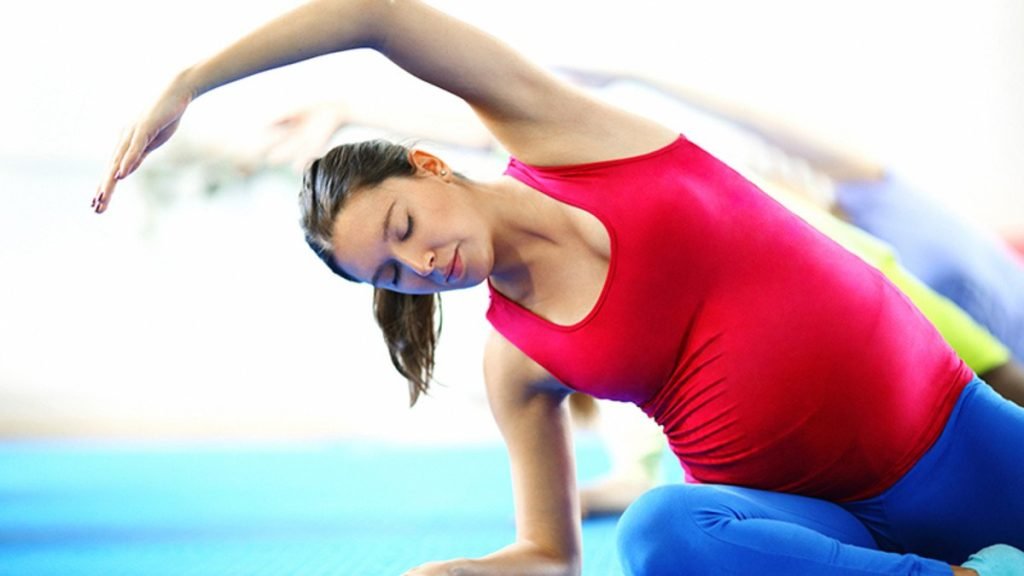During pregnancy it is very crucial to stay active for both you and your baby. If you will manage to spend at least 30 minutes per day, you will feel that pregnancy is really enjoyable moment and delivery will be much easier. Also, you will be back into the previous shape after birth. I have seen many pregnant women who look for workouts that are low-impact and assist to deal with discomforts of pregnancy like sore feet, back pain and fatigue.
For pregnant women, yoga is a significant activity. By doing yoga on the regular basis, you won’t only feel rejuvenated physically but also it helps to relax yourself and get rid of anxiety. With expectant women, prenatal yoga is very famous, since it makes your body more comfortable.
If you have never done yoga before, believe me it is a great time to get started. Your body and your baby as well are going to thank you. You need not to learn advanced techniques, following are just basic poses that you can try, these are going to keep your fatigue at a bay:
Safe Prenatal Yoga Asanas
Prenatal yoga is a all-round approach to exercise that increases stretching, mental stability and focused breathing. Researchers have stated that prenatal yoga is safe for mother as well as baby and come up with numerous benefits:
• Prenatal yoga improves sleep
• Eliminates anxiety and stress
• Enhances flexibility, strength and endurance of muscles that is required for childbirth.
• Lowers the back pain, headaches, nausea and shortness of breath.
1. Standing Side Stretch Yoga Pose
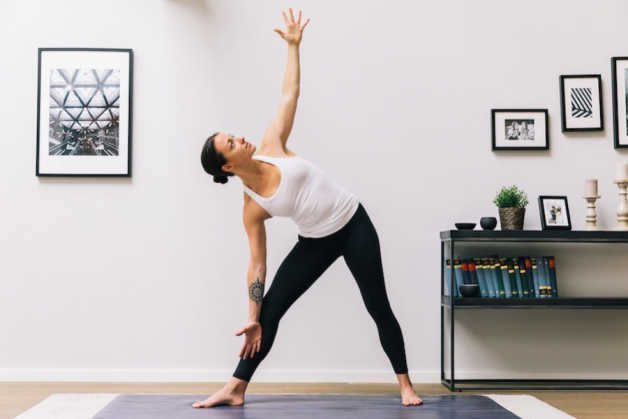
Targeted Areas: Upper back and shoulders
Benefits: Reduce back pain, enhance upper body strength and relieve shoulder stiffness.
Method: Stand Erect in Tadasana (classic mountain pose) keeping your arms at sides. Your toes touching each other and heels must spread apart in a slight manner. Interlace your fingers after raising your arms over the head with index finger to be pointed in upward direction.
Extending the arms to your side while pushing hip in opposite direction, try to draw an invisible arch. Do not forget to keep your arms straight. Move your arms towards center from back to other direction; try to hold this pose for 40-60 minutes at one time. You can also do this while sitting that is the sitting side stretch.
2. Wide Knee Child’s Pose
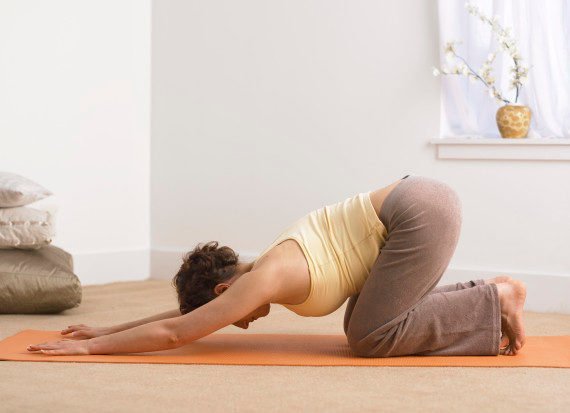
Targeted Areas: hips back and belly.
Benefits: This pose widens your hips (lowers the complications during birth), relieves the pressure of a growing belly, relieves the back pain and aids to decrease stress and anxiety.
Method: Stick to a mat in yoga to make sure your butt is hit by the shoes. Only place your chest tenderly down and put your forehead on the floor. Extend your arms straight and your hands on the deck. Hold the posture 4-5 minutes.
3. Bound Angle Pose (Baddha Konasana)
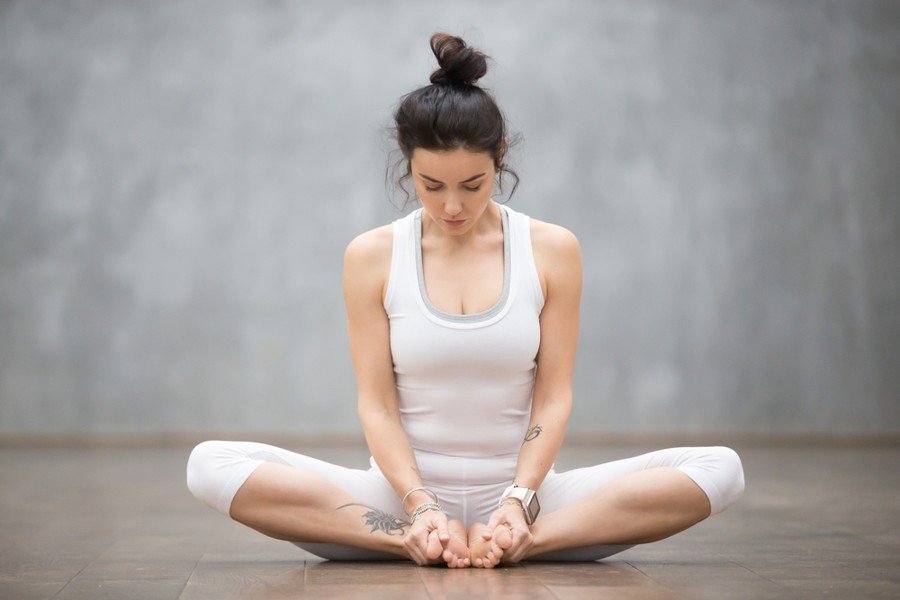
Target Areas: knees, thighs and hips.
Benefits : Opens the thighs and hips that will be easier during childbirth, reduces knee pain, decreases body fatigue.
Opens hips and thighs wider for easier childbirth, eases knee pain, helps with sore or swollen feet and reduces overall body fatigue.
Method: Having your stretched legs in a straight position in front of you, sit on the floor. By bending your knees, closer to the pelvis, pull your heels. As far as they can get, drop your knees to the sides. If your hips are tight, do not force them down. Relax your hips and thighs at the most.
Try to press the soles of the feet against each other, having your thighs towards the sides. Now grasp the ankle to feet with your hands. Hold this position for about 2-5 minutes. It will enhance the flexibility and open up the hips.
4. Yoga Squat (Malasana)
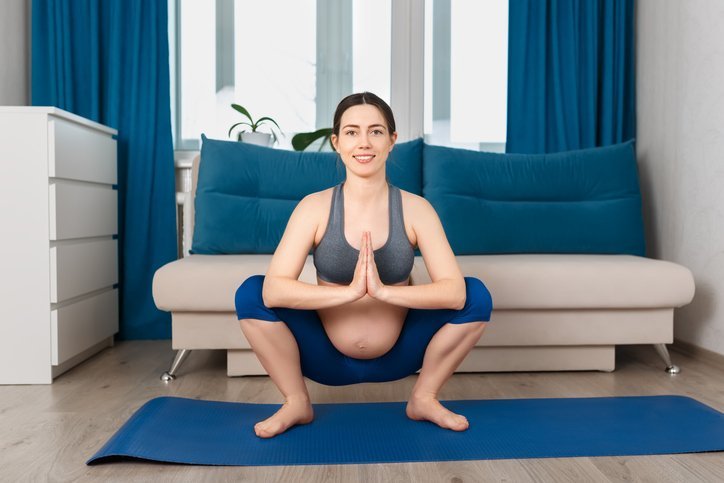
Target areas: Pelvis, hips and belly.
Benefits: If your hips are feeling to be too much tight, then this is the best pose for you. To make childbirth easier, it helps to widen the pelvis.
Method: With your legs to be spread outwards in your front, sit on the floor. Bend your one knee at a time towards upward direction. Bring your feet as close as to your butt. The knees must be little wider than the width of shoulder. Slowly and steadily lift off your butt, by putting your weight on your feet. Hold this pose for few seconds.
If you feel too exhausting, you can try to use yoga squat on which you can sit on stool.
5. Easy Pose (Sukhasana)
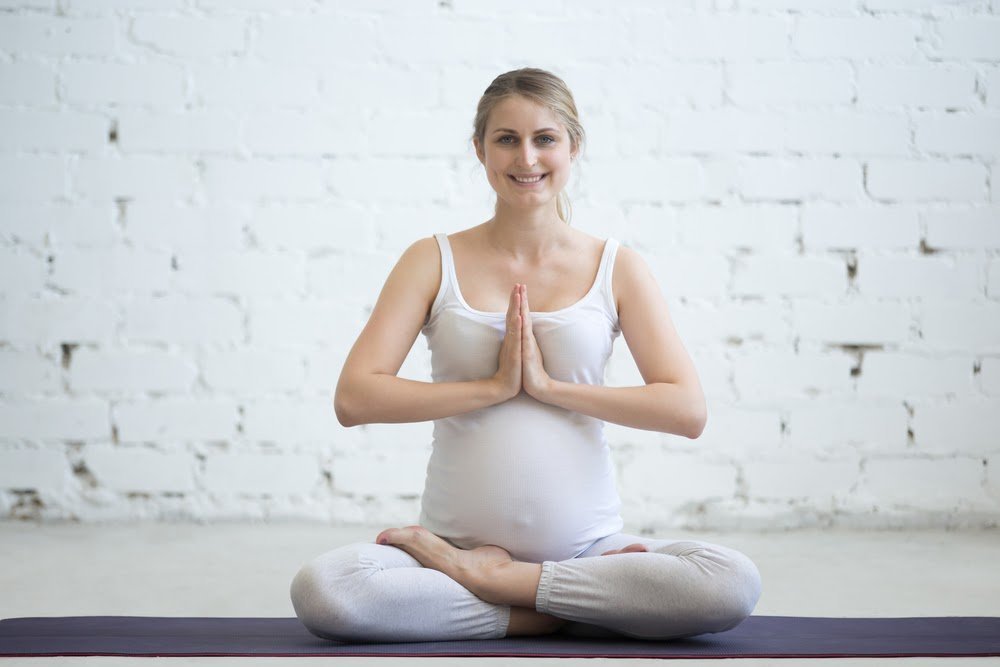
Target Areas: Hips and Back.
Benefits: This seems to be more as a meditation posture. By keeping the mind calm, it helps to fight anxiety and stress. It is also good to reduce back pain opening up the hips.
Method: After sitting on the amt, cross the shins. The sole of the feet must be facing the outward direction under opposite leg. Your legs must form triangle with shins crossed forming a straight line.
You can also keep your hands on the knees and facing your palms upside or downside. If you do not feel comfortable, sit on a folded blanket. Hold this pose as long as you feel comfortable.
Conclusion: Yoga is a mind-body practice that is required in pregnancy during anxiety and stress. Yoga asanas relieve tension around cervix by opening pelvic area. These are also crucial to recover faster from post-delivery. To make the journey of pregnancy more enjoyable and easier, you must spend some time daily on yoga. That is why yoga could be godsend to you for your pregnancy.
Caution: As in the first trimester there are high risks of miscarriages. This is the time when embryo implantation takes place. So, certain yoga poses avoid during pregnancy like deep twists and other poses that leads to influence the implantation process.
The recommendations for poses to be avoided during second trimester are the postures that include spreading the feet apart to make space for growth of belly. During third semester, asana modifications must be considered by the pregnant women that emphasize on creating space for belly and baby and to avoid the compression of belly.
Check Out: International Yoga Day 2023: Stay Motivated to Practice Yoga

